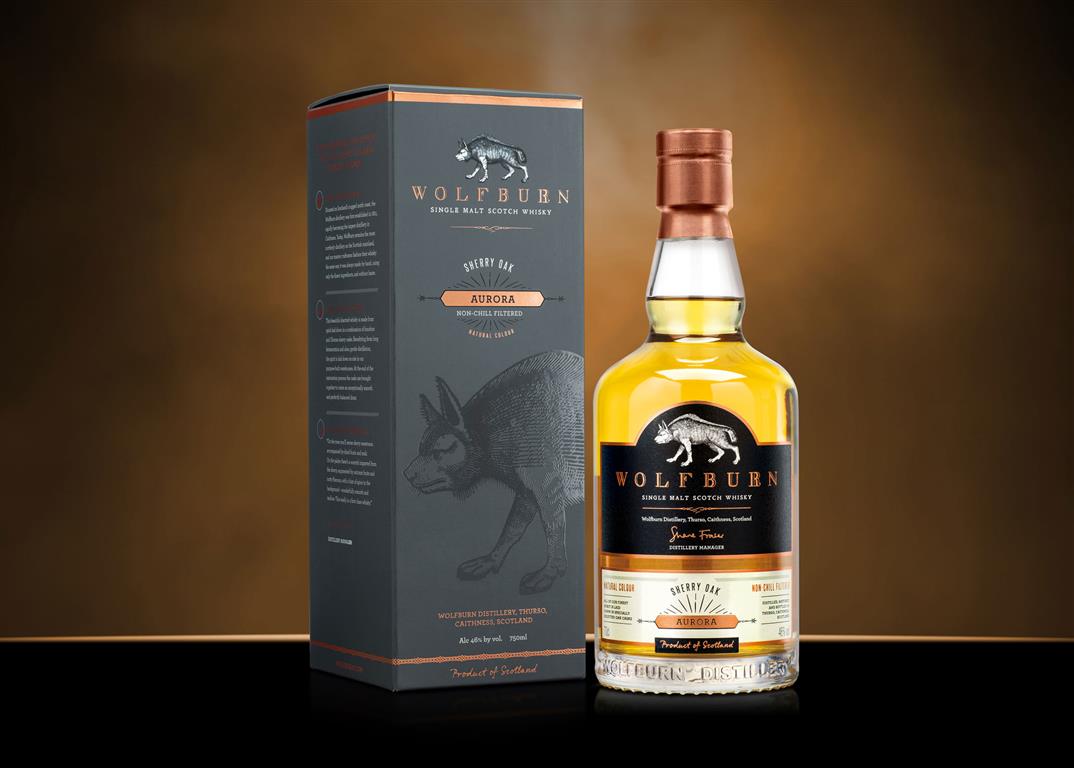
Sipping tour through Scotland - Highlands Continued
| 22-03-2017 | By Whisky of the Week |
We carry on through the stark Highland landscape to Thurso, the most northerly town in Mainland Scotland situated on the coast overlooking the Orkney Islands. There’s again plenty to see and do around the delightful town, including seeing the circular wellhouse of Meadow Well, a fine public library and the Swanson Gallery. Hard to believe, but Thurso is also a premier cold surf destination which hosts surfing championships and a paradise for watersports lovers.

Thurso is a great surfing spot
Thurso's history stretches back to at least the era of Norse Orcadian rule in Caithness, which ended in 1266. Neolithic horned cairns found on nearby Shebster Hill, which were used for burials and rituals, date back about 5 000 years. The town was an important Norse port and has a history of trade with ports throughout northern Europe until the 19th century.
The Thurso river estuary serves as a small harbor and looks out over the Pentland Firth to the Orkney island of Hoy; on a clear day, you can see the towering Old Man of Hoy in the distance. It has a thriving fishing center, with a reputation for superb salmon fishing, as well as for its linen-cloth and tanning activities. The Old St Peter's Church (St. Peter's Kirk) is one of the oldest churches in Scotland, dating to at least 1220. The nearby port of Scrabster provides ferry services to the Orkney Islands
But before we head to the Islands, we stop off at the last Highland distillery on our trip. Wolfburn distillery was founded in 1822, just to the west of the town by William Smith. The distillery was of considerable size for its day and ran as a successful commercial enterprise for several decades, being handed down through several generations of the Smith family. It is thought to have ceased production during the 1850s, although the exact date is a matter of debate. The reasons for its demise are unclear. Very little remains of the original distillery and there are no known photographs. In 2012 a private consortium gained approval from the planning authorities to build a new Wolfburn distillery in Thurso. The new distillery is situated approximately 350 m from the site of the old one and draws its water from the Wolf Burn (stream), whence it gets its name. Production commenced in early 2013.

Wolfburn Stills
The Wolfburn Signature range include Northland and Aurora and today on your virtual sipping tour, we try Aurora. A late 2016 release, Aurora was aged in a combination of second-fill quarter casks, first-fill ex-bourbon barrels and first-fill Oloroso Sherry hogsheads. Named after the Northern Lights this 3 Year Old has a sherry sweetness, with hints of nuts, dried fruit and malt balanced with barley and end in a sweet sherry spice. Aurora is smooth and well rounded.

We travel to Scabster to catch the ferry to the Orkney Islands. The Orkney Islands, is an archipelago in the Northern Isles of Scotland. Situated off the north coast of Great Britain, it comprises about 70 islands, of which 20 are inhabited. The largest settlement and administrative centre is Kirkwall. The Islands have been inhabited for at least 8 500 years. First by Mesolithic and Neolithic tribes and then by the Picts. The climate is mild and the soil is fertile. There is significant wind and marine energy resources and the island generates more than its total yearly electricity demand using renewable energy. The local people are known as Orcadians and have a rich folklore.

Orkney
The Orkney Islands is a great place to explore brochs as at least fifty brochs have been identified there. A broch is an Iron Age drystone roundhouse structure found only in Scotland. Most of the hollow-walled towers were built in the 1st centuries BC and AD. A typical broch stands from 5 to 13 meters high. Stronger and more stable than a single wall, the brochs have two parallel walls built with a hollow space between them. These two outer "skins" were bonded at certain heights by stone lintel slabs, allowing building to greater heights than could be achieved with solid walls. An intriguing element about the construction of Orkney's brochs, is that many of them were found to have an underground chamber, often accessed via a flight of stone steps. In total, at least 700 brochs are known to have existed across Scotland. The most impressive Iron Age structures of Orkney are the ruins of Broch of Burroughston and Broch of Gurness
All this exploring left me thirsty and we move to the next distillery which is one of my favourites: the Scapa Distillery. The small distillery, founded in 1885 by Macfarlane and Townsend, lies just outside of Kirkwall at Scapa Bay and draws its waters from the Lingro Burn. Scapa is one of the blending components used in Ballantine’s blends. Currently Pernod-Ricard owns the Scapa Distillery.

Scapa Distillery
The Scapa range includes a 16 Year Old and the Scapa Skiren, the dram we taste on this windswept Island today. Scapa Skiren is exclusively matured in first-fill American Oak Casks and Skiren means "glittering bright skies". It has been distilled in the Scotch whisky industry's only remaining working Lomond Still. It has notes of pineapple and honey, fresh pear, creamy vanilla sweetness with a hint of apple, honeydew melon, citrus and coastal heather. The finish ends in bold oak.

Just over an hour after departing from Kirkwall, we land back in Glasgow. From here, we investigate more Island distilleries and move onwards to our final destination of Islay. Until next time, sláinte.


